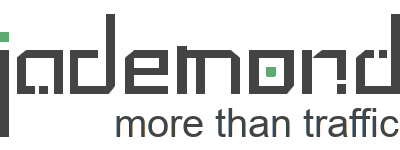A keyword is closely related to the Search Query. While the Search Queries are the terms used by people using search engines, to look for answers (usually website listings) on search engines like Baidu, Qihoo or Sogou, a Keyword is what webmasters (or their SEOs) try to optimize a website for.
Of course SEOs try to pick keywords, people use a search queries. The closer these picks are successful, the better a page is optimized for keywords people actually use as search queries, the better it well (hopefully) rank for these keywords.
Although the term “keyword” might read like it can only be a single word, SEOs usually mean keywords and keyword phrases when they simply say “keyword”. So a “keyword” can be a one word, two words or more words phrase.
Search Volume
Every keyword has got it’s own search volume. This KPI defines how much a specific keyword was searched for in the past months.
Head, Body and Tail – what has that to do with keywords?
The idea of Head, Body and Tail come from a two-dimensional chart showing the on the X-achsis the ascending search volume per keyword and on the Y-achsis the number of keyword existing with this search volume. You can find this chart also as the Search Demand chart.

Short Head Keywords
As Head or Short Head keywords we usually identify keywords that have a high search volume. There is a high number of keywords with high search volume. The problem with them is not only, that there is extremely high competition for them and therefor it is hard to optimize for them.
It is also that these keywords are usually not very specific. The search intent is not very clear. What exactly doe the person searching for “tomatoe plant” want to know? Does the person want to know what they are, buy them, know how to grow them, …?
Short Head Keywords usually do not qualify to optimize for them on a dedicated SEO landing page. They rather go for Hub Pages, where you offer the user multiple options to specify the way on your website. Which (Mid Body Keyword) direction wants the user to go?
Mid Body Keywords
Body Keywords, Mid Body Keywords or sometimes called Mid Tail Keywords, the search volume for each single keyword has already declined but is still quite good. The precision of these keywords is already quite focused with a clear search intent. Often Mid Body Keywords are build of more than one word. You can find more Mid Body than Short Head keywords.
Mid Body Keywords are usually specific enough in meaning and search intention, to optimize for them on a specific page. Depending on the search intent that might be a product category page or a magazine or blog article.
Long Tail Keywords
A Long Tail Keyword defines a single Keyword not many people search for – eventually the different Keyword Tools might even sho no search volume at all. This doesn’t mean no people would ever use this keyword as a search query – it is rather that so few people use it, that it doesn’t make sense for the keyword tools to collect and store any data on them.
Consider the search volume of a Long Tail keyword as 1-10 searches per month. Nothing you would build a landing page for, right?
But the large number of possible Long Tail Keywords on one topic might (summed up) might even exceed the search volume of a Short Head keyword.
Further more, Long Tail keywords are usually not very competitive and easy to optimize for. Often it is enough to have them included into you page, to rank for them.
How to optimize for Long Tail Keywords
While Mid Body keywords can be easily optimized for on a dedicated landing page, where Title tag, and H1 headline have the keyword included, you usually do not create separate pages for Long Tail Keywords.
Long Tail keywords work best on text rich pages of 1,000 to 5,000 words. Some people call it skyscraper content, others might call them pillar pages. The more text content, the easier it is to optimize on this one page for many Long Tail Keywords.
You will usually research a couple of them, to make sure you cover different extreme specific sub topics. The more different words you get to use, the more Long Tail Keywords you will automatically cover (even without knowing them).
The page can now easily rank for any combination of rarely searched for individual keywords, that are made up by words being used on the page. The closer they stand in the content together, the more likely the search engine will imagine, the page is relevant for a new combination of words.
Chinese Keywords
While keywords in languages like English tend to be built of more words the more precise the search intent gets, Chinese Keywords do not know the state of “words”. Chinese Keywords are made up of characters.
Chinese Short Head Keywords often are built by using one or two characters, where each Chinese Character already does have a meaning itself, combining their meanings to form the new Keywords. Like “电” meaning “electricity” and “脑” meaning “brain”, the combination “电脑” means “computer” (electrical brain).
The concept of words, that are separated by a blank space, you will rarely to never find in Chinese texts. All characters are directly touching each other forming not words but a whole phrase or sentence. That makes it complicated for non native Chinese speakers to identify relevant keywords from a text.
Chinese Keyword Research

If you are not a native Chinese speaker, we highly recommend to hire professional Chinese native speaking SEOs to do this job for. We are happy to help and to assist. Please reach out to us for a free quote on Chinese Keyword Research.
